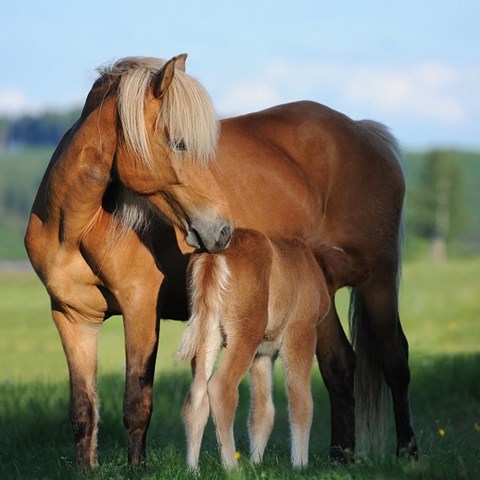Contact
Department of Animal Breeding and Genetics, Department of Animal Breeding and Genetics, Molecular genetics

Disorders of sex development (DSD) and reproduction are not uncommon among horses, though knowledge about their molecular causes is sparse. Here we characterized a ~200 kb homozygous deletion in chromosome 29 at 29.7–29.9 Mb. The region contains AKR1C genes which function as ketosteroid reductases in steroid hormone biosynthesis, including androgens and estrogens. Mutations in AKR1C genes are associated with human DSDs.
Deletion boundaries, sequence properties and gene content were studied by PCR and whole genome sequencing of select deletion homozygotes and control animals. Deletion analysis by PCR in 940 horses, including 622 with DSDs and reproductive problems and 318 phenotypically normal controls, detected 67 deletion homozygotes of which 79% were developmentally or reproductively abnormal.
Altogether, 8–9% of all abnormal horses were homozygous for the deletion, with the highest incidence (9.4%) among cryptorchids. The deletion was found in ~4% of our phenotypically normal cohort, ~1% of global warmblood horses and ponies, and ~7% of draught breeds of general horse population as retrieved from published data.
Based on the abnormal phenotype of the carriers, the functionally relevant gene content, and the low incidence in general population, we consider the deletion in chromosome 29 as a risk factor for equine DSDs and reproductive disorders.
https://doi.org/10.3390/genes11030251
Ghosh S, Davis BW, Rosengren M, Jevit MJ, Castaneda C, Arnold C, Jaxheimer J, Love CC, Varner DD, Lindgren G, Wade CM, Raudsepp T. Characterization of a Homozygous Deletion of Steroid Hormone Biosynthesis Genes in Horse Chromosome 29 as a Risk Factor for Disorders of Sex Development and Reproduction. Genes 2020, 11, 251.